It began as a vision nearly 40 years ago, but today the Fred Marquis Pinellas Trail in Pinellas County, Florida, stands proudly as one of the nation’s premier urban trails for bicycling, walking, and roller blading.
I recently had the pleasure of cycling a 40-mile segment of the Pinellas Trail, which runs from St. Petersburg to Tarpon Springs on Central Florida’s Gulf Coast. It is easy to see why this trail is one of only 34 in the nation to earn a place on the prestigious Rail Trails Hall of Fame list, recognized by the Rails To Trails Conservancy. It is the only Hall of Fame trail in Florida. The Pinellas Trail is also a two-time winner of the Best Trail of Florida award from the Florida Department of Environmental Protection. The 54-mile-long trail is used by 250,000 local residents and visitors each month, according to Pinellas County officials.
Riding the Pinellas Trail
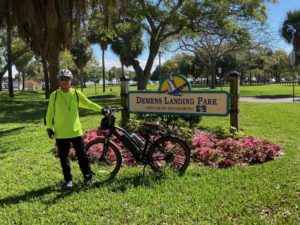 On the south end, the trail begins at Demens Landing Park in St. Petersburg, located along the waterfront on beautiful Tampa Bay near St. Pete’s famous Pier. You may be tempted to linger here, amid the marina and natural beauty of the bayfront. You might also be tempted at this point to forget riding the Pinellas Trail and instead head north on the North Bay Trail, an exceptional scenic, 6.3-mile paved trail that follows the shoreline along Tampa Bay.
On the south end, the trail begins at Demens Landing Park in St. Petersburg, located along the waterfront on beautiful Tampa Bay near St. Pete’s famous Pier. You may be tempted to linger here, amid the marina and natural beauty of the bayfront. You might also be tempted at this point to forget riding the Pinellas Trail and instead head north on the North Bay Trail, an exceptional scenic, 6.3-mile paved trail that follows the shoreline along Tampa Bay.
Heading west, the Pinellas Trail passes through St. Pete’s downtown and arts district. This area offers plenty of opportunities for stopping at coffee shops and sidewalk cafes. The annoying part is the frequent stops for traffic lights at intersections, but once you leave downtown, this situation improves.
As you continue riding, you pass by Tropicana Field, home stadium of the Tampa Bay Rays baseball team. You then ride through a warehouse district and see interesting murals painted on the walls along the trail. One of the highlights on the southern end of the trail is the quarter-mile-long Cross Bayou Bridge, which passes over Boca Ciega Bay.
If looking for a diversion off the trail, try riding into Gulfport, south of the Pinellas Trail. A newly constructed bike trail there offers a chance to view the town’s pretty waterfront district and shops.
Turning north, the Pinellas Trail passes through the cities of Seminole, Largo, Belleair, and Clearwater. In Clearwater, a popular beach community, riders may detour and take the Memorial Causeway Trail, a 5.7-mile spur route that connects the Pinellas Trail with Clearwater’s famous beach. This ride over the water makes for a pleasant side trip to the beach, where parks and restaurants are plentiful.
Dunedin, a True Gem Along the Pinellas Trail
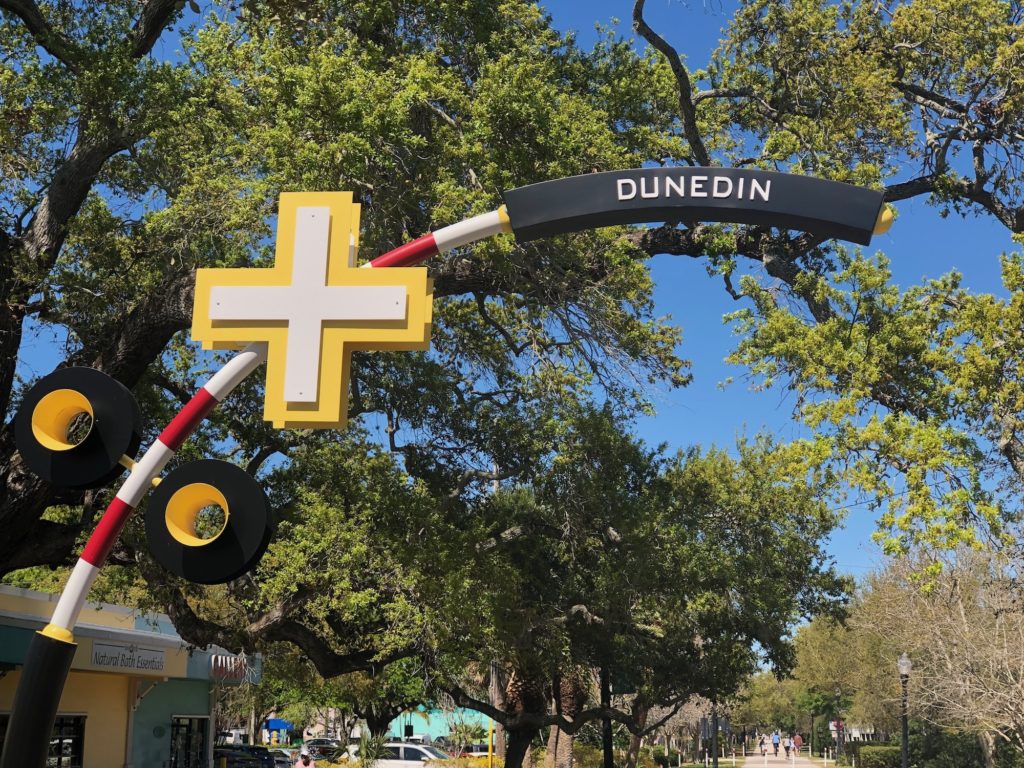
Riding north from Clearwater, you come into what many believe is the most scenic and interesting section of the trail through the small towns of Dunedin, Palm Harbor, and Tarpon Springs. This is the most heavily traveled section of the trail, and for good reason.
Pretty little Dunedin serves as the unofficial hub of the Pinellas Trail. The trail cuts through the heart of Dunedin’s trendy downtown. No other city has done a better job of welcoming bicyclists and tying the town’s identity to the trail. Dunedin was designated as Florida’s first official Trail Town by the Florida Greenways and Trails Council under a new program administered by the Office of Greenways and Trails, part of the Florida Department of Environmental Protection (DEP).
Dunedin makes a great base for a sunny vacation, whether you want to bike or walk portions of the Pinellas Trail or not. Its close proximity to top-rated beaches, a cute and walkable downtown shopping district, nearby parks, and choice of restaurants make Dunedin a sure bet. Dunedin is also home to the MLB’s Toronto Blue Jays spring training team. TD Ballpark just reopened in 2020 after undergoing a major $102 million renovation and expansion.
Whether traveling by bike or car, Clearwater and Tarpon Springs are only minutes away. You can even catch a trolley bus to get to Clearwater or Tarpon Springs. Dunedin, Clearwater, and Tarpon Springs offer unlimited opportunities for water sports, including kayaking, paddle boarding, jet skis, boat rentals, dinner boat tours, and deep-sea fishing.
To learn more about Tarpon Springs, visit this previous story from This Retirement Life.
Where to Stay
This section of the Pinellas Trail has excellent lodging options for those seeking a longer stay. On the more upscale end, the Innisbrook Resort in Palm Harbor is a renowed golf resort and spa. It features four championship golf courses. The Fenway Hotel is an elegant, historic, boutique hotel in Dunedin, just across the street from the water. For a one-of-a-kind experience, try the newly renovated Belleview Inn in Belleair. This sprawling hotel was first built in 1897 and is full of history. It features an elegantly appointed lobby, dining, a golf course and country club. If you want to be right on the beach, Clearwater Beach, a top resort destination, has nearly every major hotel chain, from elegant to bargain.
Kathy and I stayed at a modest motel in Dunedin that gets good reviews from other bikers. The Palm Court Motel is your typical old-style, roadside motel. Parking is tight, but the rooms are spacious, with partial or full kitchens, and the motel is clean and well maintained. They even provide covered parking for your bikes. This definitely is not the Marriott, but if you are looking for a bargain choice that is on the trail and close to downtown Dunedin and Honeymoon Island State Park, the Palm Court Motel is worth exploring.
For those who prefer camping or traveling by RV, the greater Dunedin area offers several commercial RV parks. According to Campground Reviews, some of the top-rated RV parks in the area include Clearwater/Lake Tarpon KOA, Bay Aire RV Park, and the Dunedin RV Resort & Blue Moon Inn. Further south on the trail, a popular spot for cyclists is the St. Petersburg/Madeira Beach KOA. Unfortunately, nearby Honeymoon Island State Park (see below) does not offer overnight camping or RV hookups.
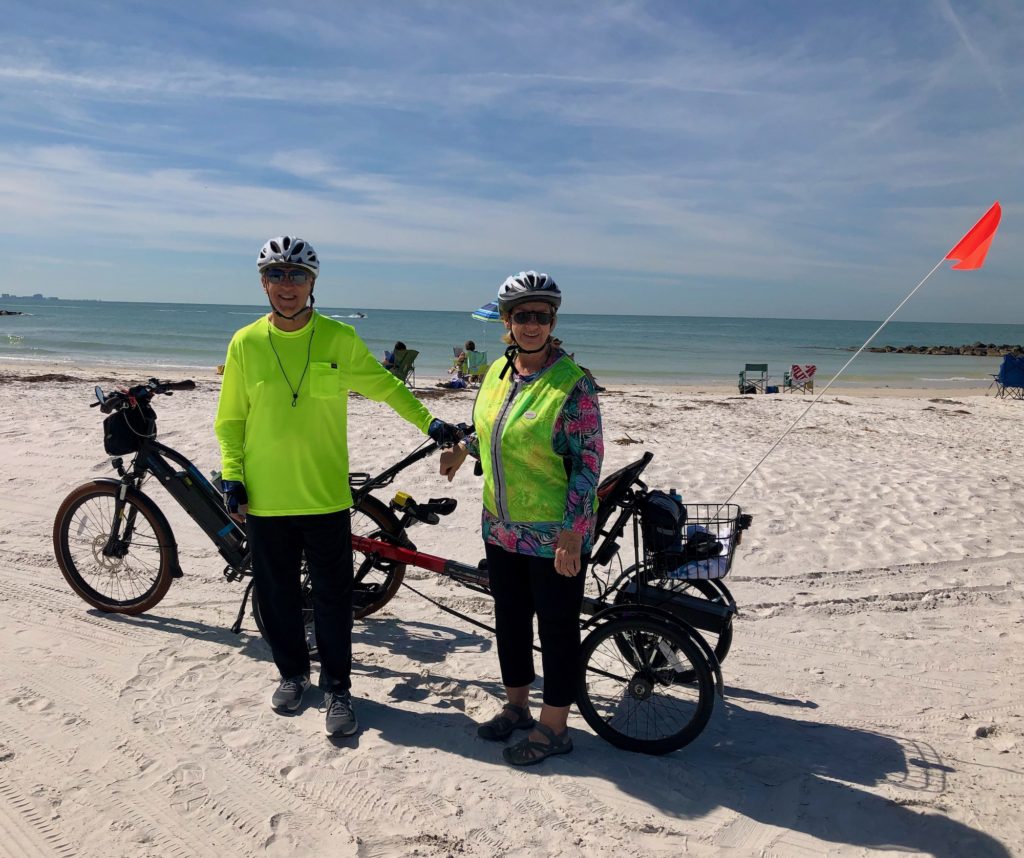
The Trail’s Northern Stretch
Just north of Dunedin, on the way to Palm Harbor, pedestrians and cyclists can take another short side trip to the beach. In this case, a spur route takes riders over the Dunedin Causeway to Honeymoon Island State Park, one of Florida’s most-visited state parks. This is a scenic ride that ends on an island blessed with untouched white-sand beaches, walking paths, and excellent facilities. A relatively new paved bike trail within the park keeps cyclists separated from motorists. From this park, you can also catch a ferry to the more primitive Caledesi Island State Park, which is not accessible by car.
Pinellas County is dotted with many fine parks. Two parks that make for pleasant stops along the trail are Weaver Park in Dunedin and Wall Springs Park in Palm Harbor. Weaver Park is a waterfront park with a fishing pier, playground, picnic tables, and restrooms. It’s a popular local spot to watch sunsets. Facing the Gulf of Mexico, Wall Springs Park once served as a private resort. At 210 acres, it’s a large park with plenty to explore. Thanks to a recent expansion, the park now features two paved trails suitable for walking and biking, plus nature trails and a large observation deck. The newer bike trail leads to a deck that overlooks the Gulf.
My ride ended at Tarpon Springs, where the trail also cuts through a lively downtown area with restaurants and coffee shops. It comes close to connecting with Tarpon Springs’ famous Sponge Docks historic district, an interesting side trip for browsing in the shops, gawking at the fishing boats, and enjoying excellent Greek and seafood restaurants. My only surprise was that Tarpon Springs hasn’t seen the value of finishing a trail connection to the Sponge Docks, forcing riders to figure out alternate routes that require at least a few blocks of road riding. Tarpon Springs is missing an opportunity to encourage more cyclists to visit this unique district.
More Growth to Come for the Pinellas Trail
Already one of Florida’s best trails, the Pinellas Trail isn’t done growing yet. The county’s master plan calls for an eventual 75-mile path known as the Pinellas Trail Loop, connecting all parts of the county. Only two gaps remain and construction is underway on one of them now.
When finished, the Pinellas Trail Loop also will include connections to trails in neighboring Pasco and Hillsborough counties. Someday, cyclists (or even dedicated walkers and skaters) will be able to ride from St. Petersburg or Clearwater to nearby Tampa, further connecting the Tampa/St. Pete metropolitan area.
The Pinellas Trail also will play a key role in far more ambitious regional trail plans. The Florida Coast-to-Coast Trail is a 250-mile cycling trail that will run from St. Petersburg, using portions of the Pinellas Trail, to Titusville, on Florida’s Atlantic Ocean coast. It is currently about 80 percent complete.
Tips for Cyclists and Walkers
Riding the Pinellas Trail is an awesome experience I would highly recommend for any cyclist. It’s no doubt great for walkers, joggers, and skaters too. The trail is well maintained and marked, with plenty of places to stop for restrooms and meal breaks. This is semi-tropical Florida, however, so here are some tips for those considering coming to Pinellas County to ride or walk this trail:
- Bring (wear) sunscreen. Much of the trail is sunny, and the Florida sun can be intense, so be sure to protect your skin. I sometimes wear a neck scarf when riding to keep sun off the back of my neck.
- Hydrate, hydrate, hydrate. Florida can be very hot and this is a long trail, so be sure to carry plenty of water and drink often as you ride. You won’t have a problem finding parks, convenience stores, and restaurants where you can replenish your drinks.
- Choose your season or time for riding. The Pinellas Trail is popular year-round, but for me, the best times to ride are the winter, spring, and late fall months. If riding in the hot and humid summer months, start your ride as early in the day as possible and plan to finish each day’s ride before lunch. Or, ride late in the day before sundown.
- Expect crowds. The Pinellas Trail is an urban trail and a very popular one. On weekends and days when the weather is perfect for a ride, you can expect to encounter some congestion on certain spots along the trail. Even then, you will find other stretches where it’s just you and the trail. If you prefer a more solitary ride where you can race along at a higher speed with few interruptions, try the nearby Withlacoochee State Trail or the Suncoast Trail.
- Respect trail etiquette and rules. Unfortunately, some cyclists can be boorish and rude. Don’t be one of them. Practice good trail etiquette. This includes yielding the right-of-way to pedestrians, slowing down when approaching groups of pedestrians, and announcing your presence when passing pedestrians (or slower cyclists) with a simple “On your left” voice reminder or a bell. Don’t hog the trail; ride single file on congested sections of the trail.
Pinellas Trail as a Role Model for Other Communities
The success of the Pinellas Trail can serve as a useful role model for other communities that are considering building or expanding their multi-use trail networks.
One lesson is that building a great trail requires vision and leadership. The idea for the Pinellas Trail originated in 1983. It was that year that the railroad right-of-way was purchased from CSX by the Florida Department of Transportation. Visionary leaders in the early development of the Pinellas Trail included both government officials and volunteers. They included Brian Smith, long-time director of planning for Pinellas County and former executive director of the county’s Metropolitan Planning Organization (MPO); Bert Valery whose son was killed while riding his bike and who was passionate about wanting to create safe places for people to ride in Pinellas County; and Fred Marquis, after whom the trail is named, served as administrator for Pinellas County from 1979 to 2000.
A second lesson for other communities is that building a quality trail requires patience and a long-term view. The Pinellas Bicycle Advisory Committee first proposed in 1984 using the abandoned CSX rail right-of-way as a bike trail. The first five miles of trail did not open until six years later, in 1990. It took many more years to complete the remainder of the Pinellas Trail, including 10 overpasses and three underpasses.
A third lesson is the need for strong community support. A key driver of community support for the trail is a nonprofit group called Friends of the Pinellas Trail. It advocates for the trail, recruits volunteers to assist with patroling and maintenance, and encourages donations to help fund additional trail amenities and landscaping. Community support is important to help fund trails. Keep Pinellas Beautiful also provides an Adopt-A-Mile program to encourage civic groups and businesses to help maintain this valuable community asset.
Pinellas County voters passed a Penny for Pinellas sales tax in 1990, with about $1.9 million of the proceeds from the original tax spent to fund trail construction. Voters have chosen to renew the Penny for Pinellas tax each time it has come up for a vote. Additional financial support for the trail has come from county, state and federal government grants.
A final lesson to learn from the Pinellas Trail’s success is that building great trails is worth it! The Pinellas Trail contributes significantly to the county’s tourism economy, generating business for restaurants, coffee shops, motels and other lodging, bike shops, and numerous other businesses. It has helped revitalize small towns like Dunedin and Tarpon Springs. In my short stay in the area, two senior cyclists both told me the Pinellas Trail played a role in their decision to retire there. The trail also adds to the region’s lifestyle and appeal, helping employers attract and retain talented labor.
Read Related Stories from This Retirement Life:
Tarpon Springs: A Taste of Greece in Central Florida
Florida’s Bike Trails Beckon You to Rediscover the Joys of Bicycling
Note: This story is meant as an informative and helpful travel guide, based solely on the author’s opinions and experiences. It does not contain any affiliate links or advertising promotions.
Got comments? We love to hear from our readers! Please scroll down and add your comments in the section below.
* * * * *
Subscribe via email for free to receive all future stories from This Retirement Life. Our blog explores topics of interest to retirees and those planning for retirement. Please see subscription information to the right of this story or below, and sign up today.
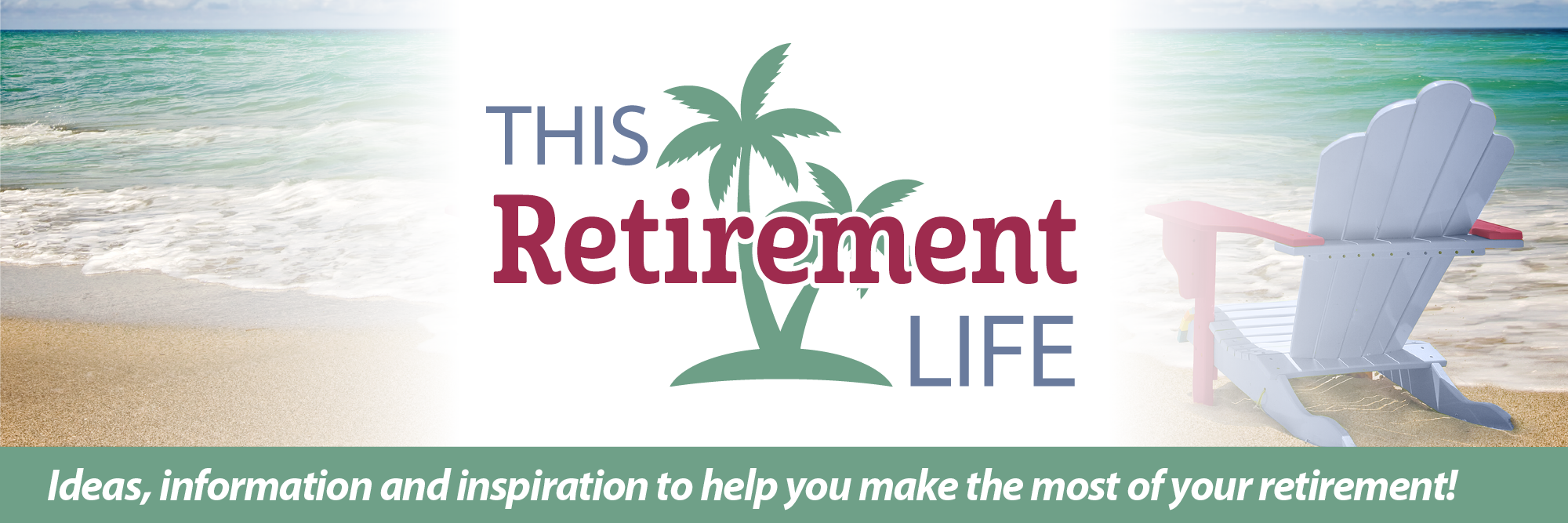
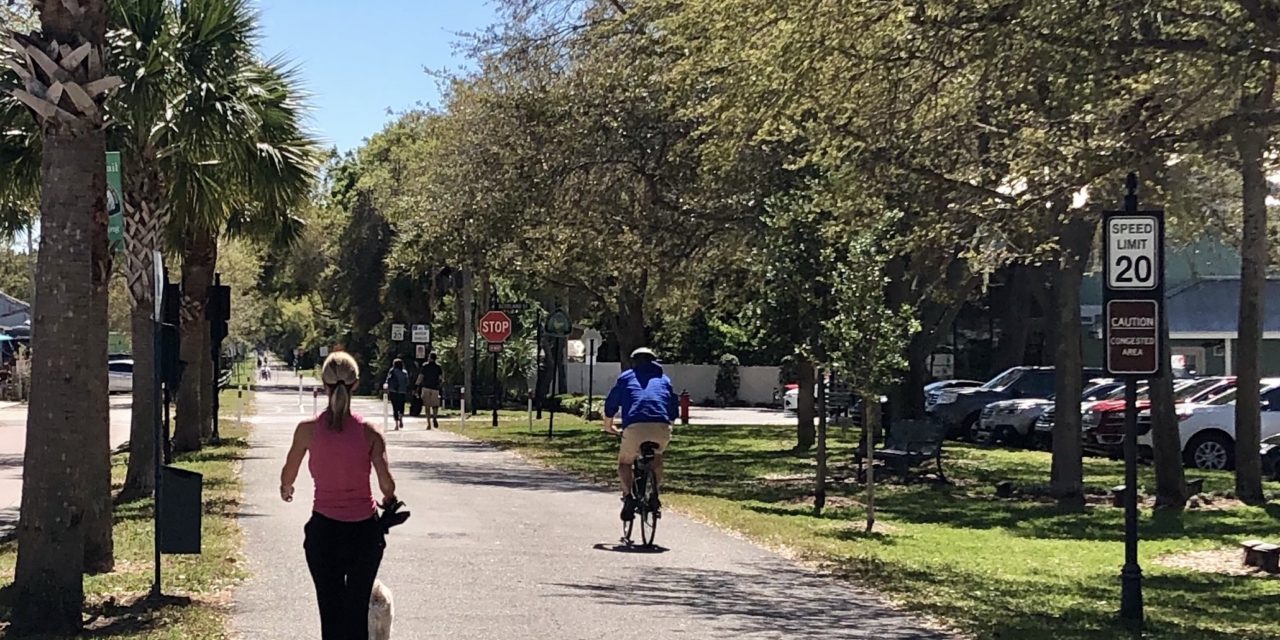


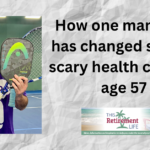
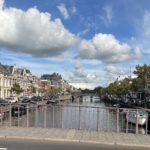
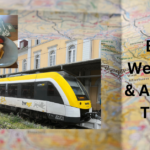

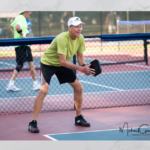
This blog is so informative. Even though we have ridden the trail we learned so much, things to look for next time we ride! Thanks for the info, well done.
Thank you, Karen. I’m glad you enjoyed the story. I will look forward to my next ride on the Pinellas Trail.
I’m very concerned with the safety of the Pinellas Trail. It’s often not wide enough for pedestrians and bicycles with both required to proceed on the right side. The addition of electric bikes(perhaps electric motorcycles in some cases) raises new concerns for pedestrians unable to see bikes coming from behind. These electric bikes can’t be controlled in capability as some think. The enforcement of safety is clearly absent. Personally, I would not allow a family member to use the trail, particularly as a pedestrian. I would recommend the same to a friend. Speed differences are excessive in many cases. It’s a great facility but currently out of proper control.
I understand your concerns. As our trails grow in popularity, the logic of having cyclists and pedestrians sharing a relatively narrow trail makes less and less sense. Ideally, I think cyclists and pedestrians should be separated, not sharing the same space. This can be done by making trails wider and with clearly marked lanes or by having side-by-side trails, one for bikes and one for walkers. I don’t think the problem is just e-bikes. I ride an e-bike and get passed frequently by non-electric road bikes that often ride at a much higher average speed. Speed limits need to be set and enforced, but of course that hasn’t worked too well on our nation’s highways either, has it?